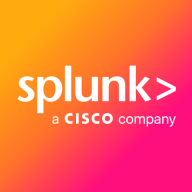

Splunk AppDynamics and InfluxDB compete in the application monitoring category. Splunk AppDynamics seems to have the upper hand due to its comprehensive application insights and strong deployment options.
Features: Splunk AppDynamics provides intricate transaction tracking, robust monitoring tools for uncovering performance issues, and detailed application insights. These features offer a holistic view of application behaviors and essential troubleshooting capabilities. InfluxDB is favored for its efficient handling of time-series data with features like Kapacitor for batch jobs and Telegraf for data collection.
Room for Improvement: Splunk AppDynamics needs to address the complexity of custom dashboards, improve network monitoring integration, and refine its user interface. Users seek better support for asynchronous calls and network insights. InfluxDB could enhance its querying capabilities and metric integration across newer technologies for better usability.
Ease of Deployment and Customer Service: Splunk AppDynamics is widely deployed across various environments, praised for strong customer support but needing improvements in response coordination. Its customer engagement scores highly. InfluxDB, used in public and hybrid clouds, provides straightforward deployment and efficient customer support, although scalability complexities are noted.
Pricing and ROI: Splunk AppDynamics is an expensive yet robust solution, delivering significant ROI through performance resolution and application reliability. It is seen as worthwhile for enterprises needing comprehensive features. InfluxDB offers a cost-effective alternative due to its open-source nature, appealing to users for its affordability and open-source benefits, even as enterprise scaling adds costs.
InfluxDB reduced my time to show data without any interruption, also reducing the number of people needed to manage the project; it is very good to have InfluxDB in my project.
Overall, as a production gatekeeper, we achieve at least 50% efficiency immediately, with potential savings ranging from 60 to 70% as well, reinforcing why it is a popular tool in the banking industry.
According to errors, exceptions, and code-level details related to their application performance on a daily basis, the application development team tries to help with Splunk AppDynamics to reduce errors and exceptions, which helps the end users get application availability and feel more confident.
To understand the magnitude of it, when the company asked to replace Splunk AppDynamics with another tool, I indicated that for the proposed tool, we would need five people to do the analysis that Splunk AppDynamics enables me to do.
AppDynamics is much more helpful.
We got a contact, an account manager, to work directly with for technical support.
They help us resolve any issues raised by our team relating to operations, application instrumentation, or any other issues.
The main challenge with InfluxDB, which is common with all databases, was handling very high throughput systems and high throughput message flow.
We’ve scaled on volume with seven years of continuous data without performance degradation.
InfluxDB's scalability is fine for me; I gather a lot of metrics and have not had any issues.
We have reached maximum capacity in our tier, and extending capacity has not been cost-effective from Splunk's perspective.
I would rate the scalability of Splunk AppDynamics as a nine out of ten.
I assess how Splunk AppDynamics scales with the growing needs of my organization as good, since we are growing and adding more servers.
It serves as the backbone of our application, and its stability is crucial.
It is very stable, with no reliability or downtime in InfluxDB.
After integrating Kafka, it never broke again, as Kafka handled messages and metrics appropriately, decreasing the message throughput.
It is necessary to conduct appropriate testing before deploying them in production to prevent potential outages.
There are no issues or bugs with the 20.4 version; it is very stable with no functionality or operational issues.
Splunk AppDynamics is superior to any alternative, including Dynatrace.
InfluxDB deprecated FluxQL, which was intuitive since developers are already familiar with standard querying.
Having a SQL abstraction in InfluxDB could be beneficial, making it more accessible for teams that prefer querying with SQL-style syntax.
It could include automated backup and a monitoring solution for InfluxDB or a script developed by a REST API.
Splunk AppDynamics does not support the complete MELT framework, which includes metrics, events, logging, and tracing for the entire stack.
If AppDynamics could develop a means to monitor without an agent, it could significantly improve application performance and reduce potential problems.
A good integration with Splunk would be very interesting, as Splunk is a good product for logs, and that part is currently missing in Splunk AppDynamics.
We use the open-source version of InfluxDB, so it is free.
My experience with pricing, setup cost, and licensing for InfluxDB was great, as I did not use any license.
We completed a three-year deal for Splunk and for AppDynamics, which costs millions of dollars.
Customers have to pay a premium price, however, they receive considerable value from the product.
All these solutions at the moment are cheap, but it is like paying for insurance; you pay insurance to avoid major damage.
The most important feature for us is low latency, which is crucial in building a high-performance engine for day trading.
InfluxDB’s core functionality is crucial as it allows us to store our data and execute queries with excellent response times.
It helps me maintain my solution easily because it is very reliable, so we didn't face any performance issues or crashes regarding our queries; we can get the results very fast.
We have multiple tools, but end users prefer to use Splunk AppDynamics because their portal navigation is very simple and clear.
The real user monitoring and digital experience monitoring effectively track actual user experience with the applications, including page loading, interaction time for both desktop and mobile applications.
This is the best feature because, although you can't monitor a whole application at once, Splunk AppDynamics gives you the option that if there is any failure—simple failure regarding anything set up as per our use cases—you will get an alert.
| Product | Market Share (%) |
|---|---|
| Splunk AppDynamics | 2.7% |
| InfluxDB | 0.5% |
| Other | 96.8% |
| Company Size | Count |
|---|---|
| Small Business | 5 |
| Midsize Enterprise | 3 |
| Large Enterprise | 8 |
| Company Size | Count |
|---|---|
| Small Business | 55 |
| Midsize Enterprise | 36 |
| Large Enterprise | 193 |
InfluxDB is open-source software that helps developers and enterprises alike to collect, store, process, and visualize time series data and to build next-generation applications. InfluxDB provides monitoring and insight on IoT, application, system, container, and infrastructure quickly and easily without complexities or compromises in scale, speed, or productivity.
InfluxDB has become a popular insight system for unified metrics and events enabling the most demanding SLAs. InfluxDB is used in just about every type of industry across a wide range of use cases, including network monitoring, IoT monitoring, industrial IoT, and infrastructure and application monitoring.
InfluxDB offers its users:
InfluxDB Benefits
There are several benefits to using InfluxDB . Some of the biggest advantages the solution offers include:
Reviews from Real Users
InfluxDB stands out among its competitors for a number of reasons. Two major ones are its flexible integration options and its data aggregation feature.
Shalauddin Ahamad S., a software engineer at a tech services company, notes, “The most valuable features are aggregating the data and the integration with Grafana for monitoring.”
Splunk AppDynamics enhances application performance monitoring with advanced diagnostics and real-time insights, offering seamless end-to-end transaction tracking and infrastructure visibility.
AppDynamics provides critical tools for businesses to analyze application behavior and performance. Through innovative features like transaction snapshot analysis and adaptable dashboards, users can quickly identify and address issues, ensuring high levels of system uptime and efficiency. It is designed to support complex environments including Kubernetes and AWS, enhancing user experience by detecting performance issues early. Despite needing improvements in network monitoring and integration, it remains a robust option for tracking application health.
What are the key features of AppDynamics?In industries like financial services and e-commerce, AppDynamics facilitates performance tracking across distributed systems, optimizing infrastructure to meet consumer demands. It excels in environments needing precise transaction monitoring and is pivotal in delivering high value and satisfaction.
We monitor all IT Infrastructure Monitoring reviews to prevent fraudulent reviews and keep review quality high. We do not post reviews by company employees or direct competitors. We validate each review for authenticity via cross-reference with LinkedIn, and personal follow-up with the reviewer when necessary.